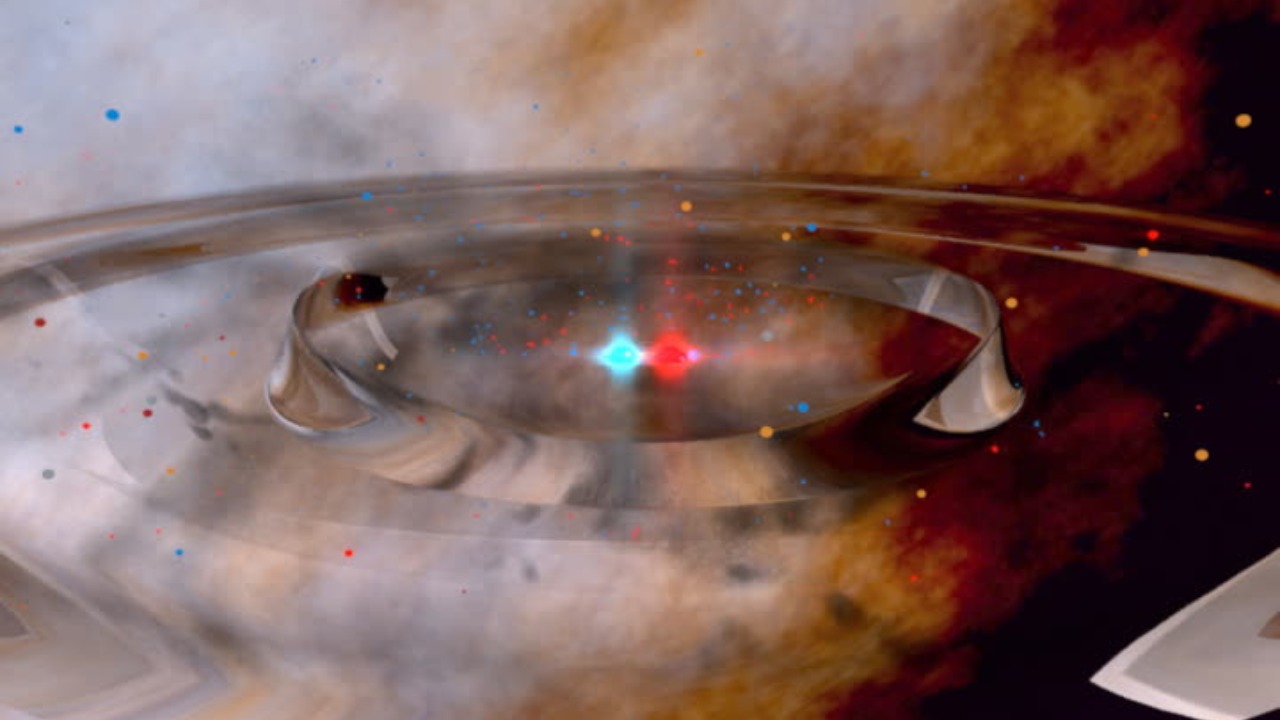
In a groundbreaking discovery, scientists have detected a massive ringing emitted by colliding black holes, providing the most compelling evidence to date that Albert Einstein, Stephen Hawking, and Roy Kerr’s theories about black hole behavior following mergers are accurate. This monumental event, captured by a gravitational wave detector, offers the clearest view yet of the nature of black holes, validating decade-old predictions and reshaping our understanding of cosmic events.
The Phenomenon of Black Hole Ringing
The massive ringing detected from the black hole collision can be likened to the echo of a bell, resonating as vibrations in spacetime following a black hole merger. These vibrations, detected through gravitational waves, manifest as a specific frequency decay. This decay confirms that the final shape and spin of the black hole stabilize predictably after the collision, aligning perfectly with theoretical models.
The scale of this event is monumental. The properties of the merged black hole matched theoretical models without any deviations, providing a robust confirmation of the predictions made by Einstein, Hawking, and Kerr.
Einstein’s General Relativity in Action
Albert Einstein’s theory of general relativity predicted the existence of gravitational waves, ripples in spacetime caused by accelerating masses, including black hole collisions. This recent detection of black hole ringing provides a direct observation of these waves, validating Einstein’s predictions.
The curvature of spacetime plays a crucial role in generating these detectable ripples, which carry energy away from the merging black holes. This observation also confirms aspects of the no-hair theorem, which posits that black holes are defined solely by their mass, charge, and spin, as per Einstein’s framework.
Hawking’s Influence on Black Hole Dynamics
Stephen Hawking’s contributions to our understanding of black holes extend to their evaporation and stability, aspects that tie directly into the observed decay patterns of the black hole ringing. Hawking’s predictions from the 1970s on black hole perturbations have been validated by the observed ringing frequencies in the 2025 detection.
Furthermore, Hawking’s work on quantum effects near the event horizons of black holes complements the classical ringing signature observed in the black hole merger. This provides a comprehensive view of black hole dynamics, merging quantum and classical perspectives.
The Kerr Metric and Spinning Black Holes
Roy Kerr’s 1963 metric, which describes rotating black holes, was instrumental in modeling the post-merger ringing. The black hole merger provided evidence that the final object adheres to Kerr’s solution, with the spin of the black hole aligning with the theoretical quasinormal modes.
The detection of frame-dragging effects in the ringing supports Kerr’s predictions for angular momentum conservation in rotating black holes. This further strengthens the validity of Kerr’s metric and its application to understanding black hole dynamics.
Role of Gravitational Wave Detectors
Gravitational wave detectors play a pivotal role in capturing faint signals from distant cosmic events like black hole collisions. The signal processing involved in these detectors isolated the ringing phase, distinguishing it from the initial inspiral and merger waveforms.
The precision of the 2025 observation is unprecedented, offering an indirect yet remarkably clear view of black hole interiors. This technological advancement has opened a new window into the study of black holes and their behavior.
Implications for Astrophysics
This confirmation of Einstein, Hawking, and Kerr’s predictions strengthens tests of general relativity in extreme gravity regimes. It has broader impacts on our understanding of black hole populations and galaxy evolution, as the detection of repeated black hole mergers can provide valuable insights into these areas.
While the current data aligns perfectly with predictions, any future deviations in black hole ringdowns could lead to revisions in our models and theories. This keeps the field of astrophysics dynamic and ever-evolving, as we continue to explore the mysteries of the universe.